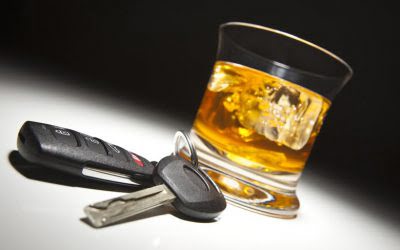Content
Alcohol poisoning can occur and key body systems can begin to shut down, at which point the person should https://ecosoberhouse.com/ get medical care or risk dying. As a result, this area of the brain plays a key role in this stage.
- A person in the Severe Impairment Stage can also become numb and insensitive to pain.
- The intoxicated person has lost consciousness and is struggling to breathe properly.
- They’ll likely joke about their blackouts or mention they won’t drink that much again.
- It is usually brought on by a BAC of around 0.12% to 0.15%, which is considered the beginning stages of severe intoxication.
- At aBAC of 0.05 or less, the individual is unlikely to appear intoxicated.
If you think it’s a case of extreme alcohol intoxication, call 911 immediately. If your loved one is still conscious, see if you can get him to lie down on his side or drink a little water. If your friend has lost consciousness, it’s necessary to get her onto her side to prevent her from potentially choking on vomit, which can lead to death. When a person who is addicted to alcohol stops drinking, they experience withdrawal symptoms—or symptoms that are opposite to the positive effects of alcohol that are experienced when drinking it. Drinking too much and too quickly can lead to significant impairments in motor coordination, decision-making, impulse control, and other functions, increasing the risk of harm.
Partial Hospitalization Programs (PHPs)
They might just pass out at this point, and they must be cared for because it is also possible that their gag reflex will be affected. Choking on one’s vomit would be disastrous and may even be fatal, so we have to monitor people reaching this stage closely. When a person is intoxicated, they may exhibit both physical and behavioral symptoms. Blood/Breath Alcohol Concentration is the amount of alcohol in the bloodstream or on one’s breath. BAC is expressed as the weight of ethanol, in grams, in 100 milliliters of blood, or 210 liters of breath. All unique content created by the Addiction Group team is sourced from current scientific research and fact-checked by an addiction counseling expert before publication. However, the information provided by Addiction Group is not a substitute for professional treatment advice.

However, most people with AUD—no matter their age or the severity of their alcohol problems—can benefit from treatment with behavioral health therapies, medications, or both. During this stage, a person experiences the rewarding effects of alcohol, such as euphoria, the reduction of anxiety, and the easing of social interactions. Learn more about the short- and long-term effects of alcohol consumption here. People may feel euphoric while drinking alcohol because ethanol stimulates the release of dopamine, a feel-good chemical in the brain. This effect on the brain’s dopamine system can lead to alcohol dependence. Although people can safely consume alcohol without experiencing immediate adverse health effects, long term alcohol consumption can jeopardize overall health.
Products & Services
Location of GABAA receptors within the synapse may also contribute to ethanol sensitivity. Symptoms of intoxication at lower doses may include mild sedation and poor coordination. At higher doses, there may be slurred speech, trouble walking, and vomiting. Extreme doses may result in a respiratory depression, coma, or death. Complications may include seizures, aspiration pneumonia, injuries including suicide, and low blood sugar.
Support groups such as Alcoholics Anonymous and Self-Management And Recovery Training are open to anyone with a substance use disorder. Some services provide food and transportation, but services vary by program.
What to know about alcohol intoxication
The stages of intoxication are reflective of a teen’s blood alcohol concentration. Blood alcohol concentration, or BAC, refers to the percentage of alcohol in an individual’s bloodstream. For example, a BAC of .10% means that an individual’s blood supply contains one part of alcohol for every 1000 parts of blood. Nationwide, a person is considered legally intoxicated if they have a BAC of .08% or higher and a blood alcohol test that comes up with a .08% BAC or higher can be used as legal evidence.
- However, they still use alcohol frequently and can’t imagine a “good night out” without it.
- Alcohol abuse of any kind puts people at a greater risk of developing more serious problems over time.
- A doctor can diagnose intoxication by checking the patient’s blood alcohol content levels.
- Together with our caring professionals, you can help your loved ones turn their life around and make their old addiction their new success story.
- You’ll need to drink more to achieve the same effects you used to feel and often pass out from alcohol.
- It is important to take proactive steps to address teenage drinking early to avoid greater adverse consequences later.
Hypoglycaemia occurs due to ethanol’s inhibition of gluconeogenesis, especially in children, and may cause lactic acidosis, ketoacidosis, and acute kidney injury. Alcohol is metabolized by a normal liver at the rate of about 8 grams of stages of alcohol intoxication pure ethanol per hour. 8 grams or 10 mL (0.34 US fl oz) is one British standard unit. An «abnormal» liver with conditions such as hepatitis, cirrhosis, gall bladder disease, and cancer is likely to result in a slower rate of metabolism.
Level 6: Coma (unconsciousness)
Individuals may have impaired memory, emotional instability, and trouble understanding things. Physical signs of intoxication include blurred vision, loss of balance, slow reaction time, slurred speech, sleepiness, and nausea or vomiting. Given the dangers of a high blood alcohol level, recognizing the stages of intoxication beyond being legally drunk is essential. In truth, the physical consequences of .08% BAC are only the beginning of the danger zone. Vince Ayaga Content Contributor Vincent Ayaga is a medical researcher and experienced content writer with a bachelor’s degree in Medical Microbiology. His areas of special interest include disease investigation, prevention, and control strategies. His mission is to educate society on the effects of alcohol abuse and dependence and available evidence-based solutions in addiction therapy.


Comentarios recientes